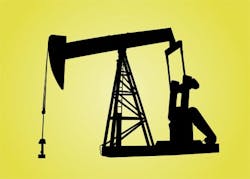What’s the most important current challenge the oil-and-gas industry faces? “Keeping jobs we have and growing the industry —and making sure we have the resources [to do that],” answers Rayola Dougher, senior economic advisor for the American Petroleum Institute (www.api.org), Washington, D.C. “There have been plans to bring on new capacity that are stalled or shelved. Refineries are cutting back operations. And there’s been a big reduction for petroleum-based fuel in the U.S.” For diesel, which Dougher calls “a good marker of the economy,” demand from Oct. 2008 to Oct. 2009 dropped 12.5 percent, she states. Asserting that industry has the ability to move forward in tapping the U.S. resources, Dougher suggests that the biggest current threat to the industry is the federal government’s and current administration’s actions regarding man-made global warming. “We’re concerned about putting energy at risk.” That’s because legislative proposals “force highest-cost alternatives, such as transportation, to be developed first. This is not the most efficient way,” she comments. Nonetheless, natural gas, a so-called “clean” fossil fuel, requires more focus, especially getting product to market, Dougher emphasizes. That could be happening, Gene Cammack observes. “The biggest shift we’ve seen in the U.S. is the natural-gas industry. We’ve gone from an outlook that said, ‘We’re really going to be very short,’ to an outlook that says, ‘We can produce as much natural gas as we need,’ ” adds Commack, an oil-and-gas consultant with automation supplier Siemens Industry Inc. (www.usa.siemens.com/industry/us/en), in Houston.Horizontal drilling opens new or previously marginal fields, Commack remarks. And because of such drilling technique, “people are looking at domestic shales with new eyes—re-looking at reservoirs they’d examined years ago,” adds Mike Strathman, who leads Burlington, Mass.-based vendor Aspen Technology Inc.’s (www.aspentech.com) efforts with the oil-and-gas E&P industry.One rediscovery causing second looks is Northern Appalachia’s Marcellus Shale. According to Pennsylvania State University Professor Terry Engelder and State University of New York-Freedonia Professor Gary Lash, that formation may contain approximately 168 trillion to 516 trillion cubic feet of natural gas.The Marcellus has become more recoverable due to horizontal drilling, Strathman states. Work has started and production has begun, he adds. “We have seen an increase in production.” For example, 2008 levels exceeded 2007’s. “That’s the first time we’ve seen that in a while.” Digital oil fieldsStill, one principal challenge oil-and-gas faced in the past six months or so is “getting more out of what you have,” Strathman remarks. “That means E&P is being treated more as manufacturing, something with which the industry has always had problems.” That’s because “in the oil patch, when [crude] is coming from 10,000-foot to 15,000-foot depths, it makes optimization more difficult than in the refining business.” Optimizing oil-patch production means having digital oil fields, which might also be called i-fields (for information fields) or smart-fields, Strathman says. “It’s going to be good for this industry.” That’s because, while refiners and chemicals manufacturers have to figure out how to control operations in real time, “E&P is still in the Dark Ages with this.”Digital oil-field components include advanced process control, which gives speed with which to solve and then react to changes. To help fill information voids, soft—software-based or virtual—sensors are being created, Strathman observes. Commack predicts “a lot more modeling.”Regardless, though, where people want to drill, “there’s a real pent-up frustration in the industry to get automation,” Commack observes. Some of this exists because “of the amount of drilling that needs to be done, and to go in and be as effective as possible.” Doing that, he forecasts, will involve new sensor technologies, ultrasonic and down-hole, “that give real-time data.”C. Kenna Amos, [email protected], is an Automation World Contributing Editor. American Petroleum Institutewww.api.orgSiemens Industry Inc.www.usa.siemens.com/industry/us/enAspen Technology Inc.www.aspentech.com
Subscribe to Automation World's RSS Feeds for Columns & Departments

